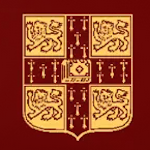Szombathely (Ger., Steinamanger), the capital of the Hungarian county of Vas, 162 m. W. of Budapest by rail. Pop. (1900), 23,309. It is the seat of a Roman Catholic bishop, and possesses a beautiful cathedral (1797-1821) with two towers, 180 ft. high. Other buildings are the episcopal palace, to which is attached a museum of Roman antiquities, the county hall, the convent of the Dominicans and the seminary for Roman Catholic priests. Szombathely is an important railway and industrial centre, and has a state railway workshop, manufactories for agricultural machinery, foundries and steam mills.
About 5 m. south of Szombathely lies the small village of Jaak, with a Dominican convent from the iith century, which has a remarkably beautiful church, one of the best specimens of Romanesque architecture in the country. About 16 m. by rail south of the town is Kormend (pop. 6171), with a beautiful castle belonging to Count Bathyanyi. About 16 m. by rail, west of Kormend is the small town of Szent Gotthard (pop., 2055, mostly Germans), with a Cistercian abbey, founded by King Bela III. in 1183, where General Montecucculi gained a decisive victory over the Turks in 1664.
Szombathely occupies the site of the Roman town Sabaria Savaria), which was the capital of Pannonia. Here in A.D. 193 Septimius Severus was proclaimed emperor by his legions. Many remains from the Roman period have been excavated, such as traces of an amphitheatre, a triumphal arch, the old fortifications, an aqueduct, &c. The remains are preserved partly in the museum at Budapest, and partly in the municipal museum. The bishopric was created in 1777.
T the last letter in the Semitic alphabet, where, however, its form in the earliest inscriptions is that of a St Andrew's Cross X. In both Greek and Latin, however, although the upright and cross stroke are frequently not exactly at right angles and the upright often projects beyond the cross stroke, the forms approach more nearly to the modern than to the Semitic shape. The name Taw was taken over in the Greek Tali. The sound was that of the unvoiced dental stop. The English t, however, is not dental but alveolar, being pronounced, as d also, not by putting the tongue against the teeth but against their sockets. This difference is marked in the phonetic differentiation of the dental and the alveolar t by writing them respectively t and t. The alveolar sound is frequent also in the languages of India, which possess both this and the dental sound. The Indian t, however, is probably produced still farther from the teeth than is the English sound. In the middle of words when t precedes a palatal sound like i (y) which is not syllabic, it coalesces with it into the sound of sh as in position, nation, &c. The change to a sibilant in these cases took place in late Latin, but in Middle English the i following the t was still pronounced as a separate syllable. A later change is that which is seen in the pronunciation of nature as neits a . This arises from the pronunciation of u as yu, and does not affect the English dialects which have not thus modified the u sound. Similar changes had taken place in some of the local dialects of Italy before the Christian era. At the end of words the English t is really aspirated, a breath being audible after the t in words like bit, hit, pit. This is the sound that in ancient Greek was represented by 0. In medieval and modern Greek, however, this has become the unvoiced sound represented in English by th in thin, thick, pith. Though represented in English by two symbols this is a single sound, which may be either interdental or, as frequently in English, produced "by keeping the tongue loosely behind the upper front teeth, so that the breath escapes partly between the tongue and the teeth, and partly, if the teeth are not very closely set, through the interstices between them" (Jespersen). In English th represents both the unvoiced sound J as in thin, &c., and the voiced sound 5, which is found initially only in pronominal words like this, that, there, then, those, is commonest medially as in father, bother, smother, either, and is found also finally in words like with (the preposition), both. Early English used ]' and S indiscriminately for both voiced and unvoiced sounds, in Middle English S disappeared and p was gradually assimilated in form to y, which is often found for it in early printing. It is, however, to be regretted that English has not kept the old symbols for sounds which are very characteristic of the language. In modern Greek the ancient b (d) has become the voiced spirant (8), though it is still written b. Hence to represent D, Greek has now to resort to the clumsy device of writing NT instead. (P. GI.)


